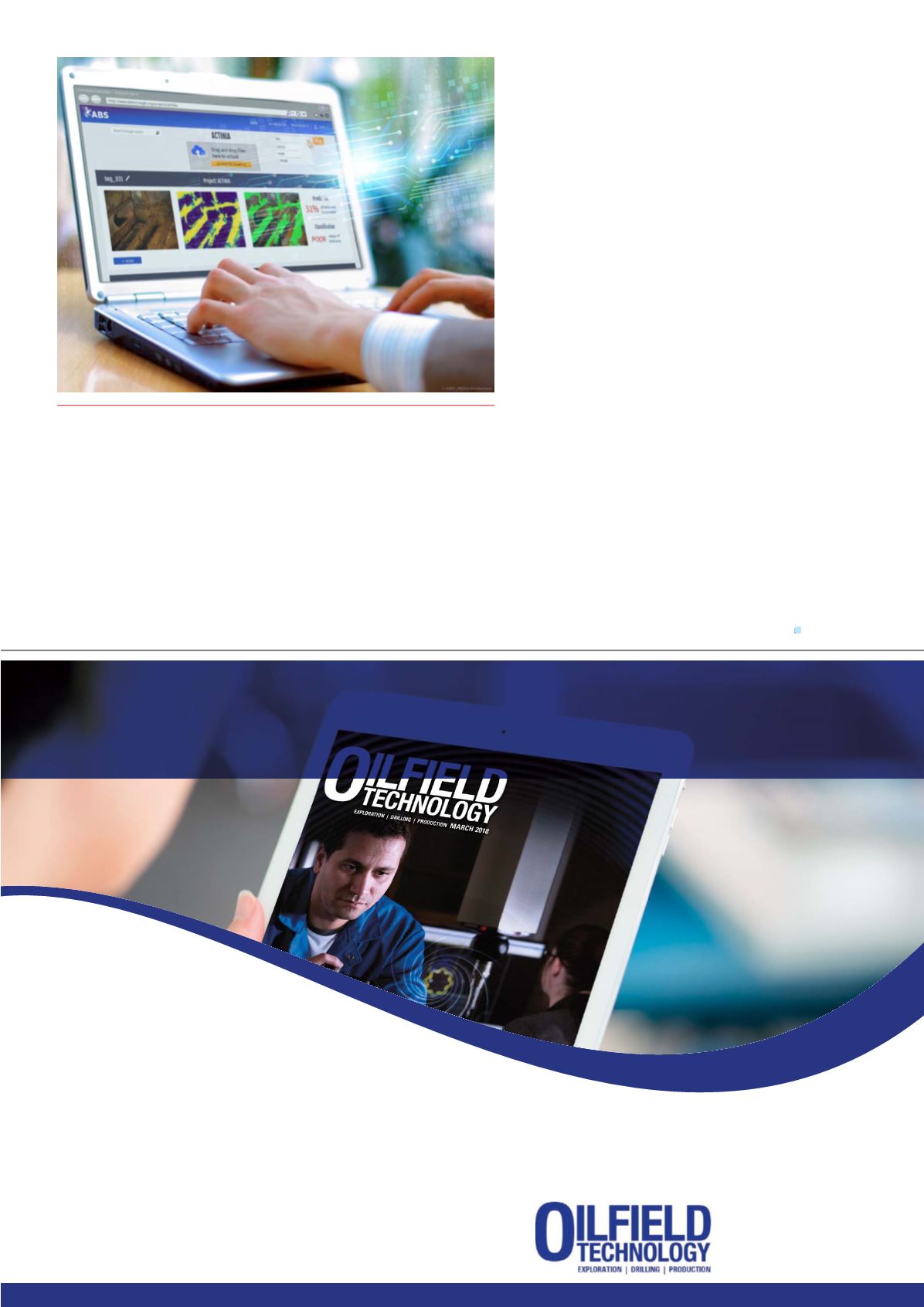
Asgoodasahuman?
A common question fromABS clients is whether the algorithm is of
sufficient quality to accurately assess the problemof coating failure.
Comparison studies show the tool canmatch human judgment in
general for the purpose it is developed for.
The AI tool will mark areas of corrosion with colour to give a rating of
the coating’s condition, based on which the client canmake decisions.
The accuracy of the AI algorithm for the grading task is above 90%
for test data used at the development stage. Field test results have also
shown an accuracy level similar to human inspectors.
In addition to images with which to train the AI, the process
needs labels placed by experienced surveyors to indicate to the
computer the location of the corrosion. Improved labelling of the
corrosion provided by the surveyors will lead to better accuracy
from the AI output.
Work continues tomake the tool more accurate for
assessment of coatings, and conversations with clients are
ongoing to customise the tool for their particular applications
using images specific to their assets and structures.
Conclusion
The project has proven the value of using AI technology in
themarine and offshore industry as ameans of supporting
trained inspectors with a fast and reliablemeans to aid their
decision-making processes during coating assessment tasks,
especially when RITs are applied.
Through data tests and case studies, it has been concluded
that the tool can provide reliable reference data and information
to surveyors in the field. Test results of the best performingmodel
show its ability to identify coating failures from field images that
have not been previously processed. These factors support the
value of the tool to act as a scanning process for inspection with RITs and
as an electronic coating evaluation standard/guideline to aid inspectors.
These tools and capabilities will continue to improve. With the
iterative labelling process integrated, new data will be fed continuously
into the training process to improve the capability of the tool, andmake
it more accurate, reliable and general.
While currently focused on coating assessment of internal tank
structures, the scope of the AI tool can be expanded to coating
assessment of other types of structures or evaluating of other defects
such as cracks, fractures or large structural deformations.
Figure 1.
ABS is usingML to analyse coatings in offshore structures.
Over 3000
professionals
have downloaded
the app already.
Have you?
Oilfield Technology App
www.oilfieldtechnology.com/app







